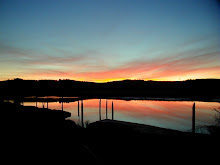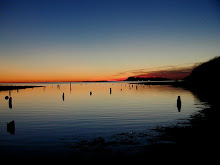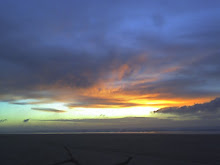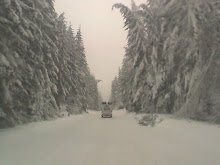Beach Wetlands II
One of the great things about wetlands on the beach in prehistoric times is they were more than just wetlands, they were lakes. The land form of the beach is pretty much defined by north south dunes with swales between. The swales (wetland areas) also run north south. The swales tend to be low and very flat. That flat profile means that a fairly low head (low elevation) dam can flood a tremendous area. For example, a road about 18"-24" high that crosses a wetland can become a dike (look at a cranberry bog) and back up water in a hundred acre area. Of course, this is what beavers are so good at doing. They will build a series of dams and each dam has the capacity to raise the water level behind it 2 feet or more.
Now all these lakes had connections and with some creative portages over beaver dams and across the dunes, these connections formed an inter-dune lake system that was the backbone of travel for Chinook canoe paddlers as they traveled north and south in the lake system. In historic times, my fathers friend Ed Chellis commented that when the lakes froze north of Ocean Park, it was possible to ice skate from Ocean Park north towards Oysterville, then take off your skates, walk over the dunes and be in Oysterville. I've looked at the wetlands north of Ocean Park and sure enough, the wetland that is defined by the WPA ditch drains a wetland that connects north to Surfside (behind the golf course), then a short crossing over dune puts you in another wetland (Skating Lake..nice name) that connects north towards Oysterville Weatherbeach Road. During the cold weather in the late 60's, my family would join other families at Skating Lake for skate parties but once Surfside was built and an outfall was built to drain water away from Surfside (and towards Whisky Slough), this lake disappeared.
Blog Archive
Followers
About Me

- Jim
- Seaview, Washington, United States
- I live a mile from where I was born but sometimes I feel like a stranger in my own strange land. Descendant from gold miners (The Yukon and Mexico), coal miners (Wales, British Columbia and Washington), timbermen (Sweden), sod and berry farmers (Missouri, Washington), Klondikers, fortune seekers and just plain hearty peasant stock.








